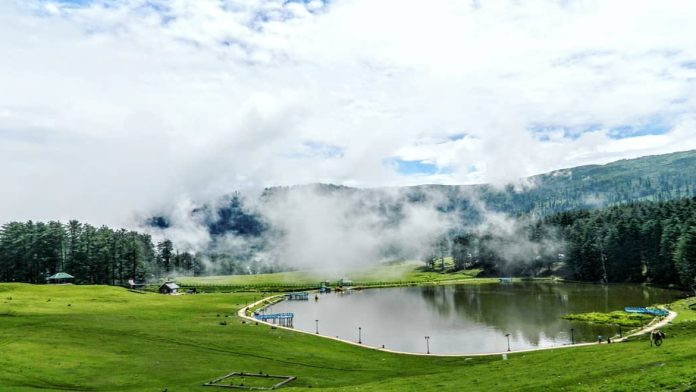As the global tourism industry grapples with the aftermath of the devastating impact wrought by the COVID-19 pandemic, there is a discernible shift towards cultural tourism as a preferred strategy for recovery and resurgence. It is attributed not only to its positive implications for the sector’s long-term health and resilience but also for the well-being of local communities. Recent statistics by the World Tourism Organisation indicate that the tourism sector has recovered marvellously, unlike other sectors. Compulsive travel syndrome has been observed, as lockdown has quite a lasting impact on people. International tourist arrivals have rebounded to almost pre-COVID levels, with South Asia leading the way. Against this backdrop, with millions of international tourists converging on India, particularly during the climatically favourable period from October to March, drawn primarily to explore its architectural and cultural heritage, the Union Territory of Jammu and Kashmir finds itself in a propitious position to broaden the scope of its tourism promotion strategy.
Every nook and cranny of India boasts a distinctive identity and a culturally rich tapestry, presenting a myriad of diversities even at the district level. Virtually all states have meticulously developed these locales into cultural tourism hotspots, complete with world-class infrastructure catering to international and domestic tourists. Exemplifying this, Kullu Dussehra annually draws crowds of lakhs in October, while Dharamkot in Himachal Pradesh has earned the moniker “Mini Israel,” witnessing a constant influx of Israeli tourists throughout the year. The commendable infrastructure at McLeodganj is another testament to Himachal’s tourism prowess, alongside well-known destinations like Shimla, Dalhousie, Kasauli, Manali, Dharamshala, Palampur, and Kangra.
The scenario in Jammu and Kashmir mirrors the vibrancy of Himachal. Each city in the Jammu division is steeped in Mahabharata history, with the Pandavas reputedly spending considerable time in these locales. Mythical stories enshroud the Surinsar and Mansar lakes, as well as the Jakh pond. Temples in Jammu, where even Guru Nanak Ji once stayed, add historical depth, while the Naag temples in Kishtwar, Doda, Bhaderwah, and Patnitop stand as a testament to the Naag kingdom’s prevalence in the region. The annual congregations at these places are spectacular and, if promoted adequately, could become major tourist attractions like Kullu Dussehra. Similar potential lies in Basohli, Akhnoor and Reasi, where centuries-old forts, archaeological sites, rich cultural heritage, and art await exploration. However, these cities lack basic infrastructure, with a dearth of quality hotels, insufficient homestay options, and a scarcity of good restaurants.
While the Tourism Department allocates budgetary provisions, the translation of intent into tangible outcomes faces challenges. The UNESCO-recommended world-class heritage sites, including Mubarak Mandi, remain far from completion, exemplifying bureaucratic delays. Basohli Paintings, now equipped with the prestigious GI Tag, could evolve into an international art centre, yet decisive action is desired. Reasi, near Katra with a massive influx of pilgrims, boasts ideal rafting sites on the Chenab River, Bhimgarh Fort, and General Zorawar Singh’s legacy, but the lack of promotion hinders its potential. The Government’s recent focus on developing alternative tourist destinations and restoring old forts and religious sites is promising. Efforts to develop infrastructure are underway, with an emphasis on the public-private partnership (PPP) model.
Despite ongoing transformations, immediate attention is required for major cities like Jammu, where existing infrastructure can be leveraged. Propagating local festivals and marketing them on appropriate platforms are crucial strategies. Coordination between multiple departments is essential to celebrating local cultural rituals on a grand scale, attracting tourists’ attention. While homestays offer an alternative, comprehensive training for the locals is paramount. Overcoming decades of discrimination requires the Tourism Department to venture beyond comfort zones and implement large-scale plans. Every innovative idea should be welcomed, and local participation is imperative for success. The tourism industry, a multi-billion-dollar juggernaut, demands sustained efforts, and the administration must provide an extra push to the concerned departments.
Trending Now
E-Paper


